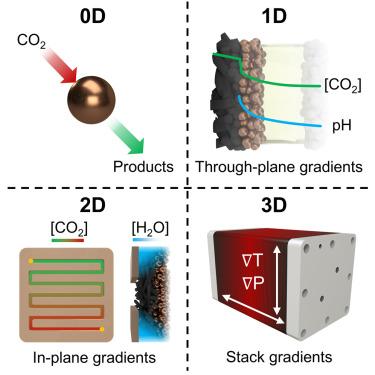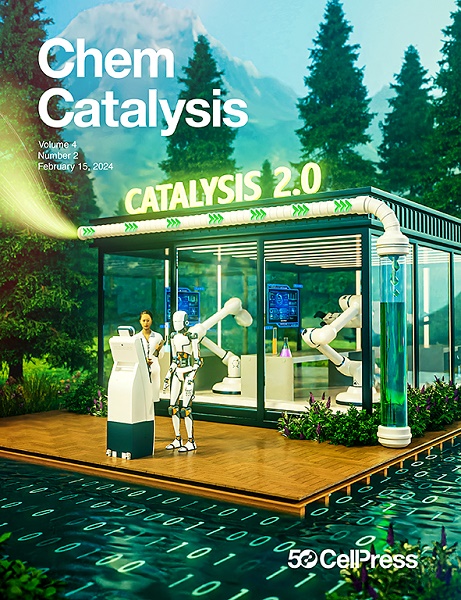Spatial effects define CO2 electrolysis systems
IF 11.5
Q1 CHEMISTRY, PHYSICAL
引用次数: 0
Abstract
CO2 electrolyzers show promise as a cleaner alternative to produce value-added chemicals. In the last decade, research has shifted from classifying CO2 reduction activity and selectivity as a catalytic property (zero-dimensional [0D]) to one that includes the complex interactions of gas, liquid, and solid species between the cathode and anode (1D). To scale CO2 electrolyzers, however, 2D and 3D spatial variations in product selectivity, activity, and stability arise due to the design of reactor components, as well as concentration variations of the reactants, intermediates, and products. Conventional “black-box” measurement protocols are then insufficient to characterize CO2 electrolyzers. Here, we discuss the critical multi-dimensional phenomena occurring inside these electrochemical systems, which impact the observed performance. Recent literature is used to demonstrate how a spatial perspective is essential for proper data interpretation, designing effective catalysts, and prolonging CO2 electrolyzer lifetimes. Researchers should then define CO2 electrolysis systems in multiple dimensions (2D and 3D).

界定二氧化碳电解系统的空间效应
二氧化碳电解槽有望成为生产高附加值化学品的清洁替代方案。在过去十年中,研究已从将二氧化碳还原活性和选择性归类为催化特性(零维 [0D])转变为包括阴极和阳极之间气体、液体和固体物种的复杂相互作用(1D)。然而,由于反应器部件的设计,以及反应物、中间产物和产物浓度的变化,二氧化碳电解槽的规模在产品选择性、活性和稳定性方面会出现二维和三维空间变化。因此,传统的 "黑箱 "测量方案不足以描述二氧化碳电解槽的特性。在此,我们将讨论这些电化学系统内部发生的影响观察性能的关键多维现象。最新的文献用来证明空间视角对于正确解读数据、设计有效的催化剂和延长二氧化碳电解槽寿命是多么重要。因此,研究人员应从多个维度(二维和三维)定义二氧化碳电解系统。
本文章由计算机程序翻译,如有差异,请以英文原文为准。
求助全文
约1分钟内获得全文
求助全文
来源期刊
CiteScore
10.50
自引率
6.40%
发文量
0
期刊介绍:
Chem Catalysis is a monthly journal that publishes innovative research on fundamental and applied catalysis, providing a platform for researchers across chemistry, chemical engineering, and related fields. It serves as a premier resource for scientists and engineers in academia and industry, covering heterogeneous, homogeneous, and biocatalysis. Emphasizing transformative methods and technologies, the journal aims to advance understanding, introduce novel catalysts, and connect fundamental insights to real-world applications for societal benefit.

 求助内容:
求助内容: 应助结果提醒方式:
应助结果提醒方式:


